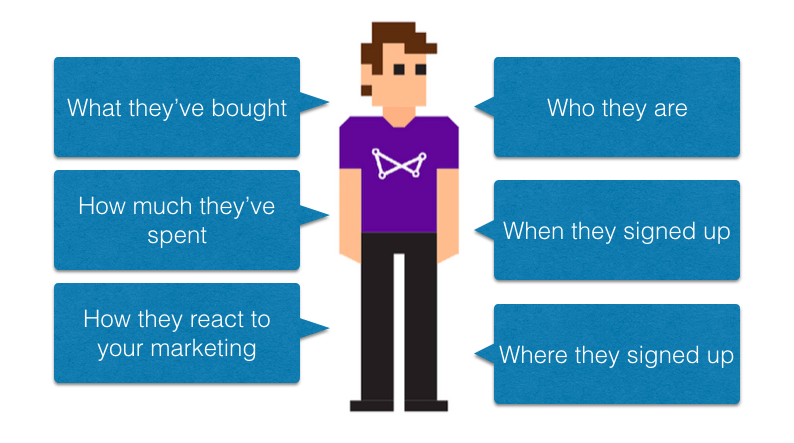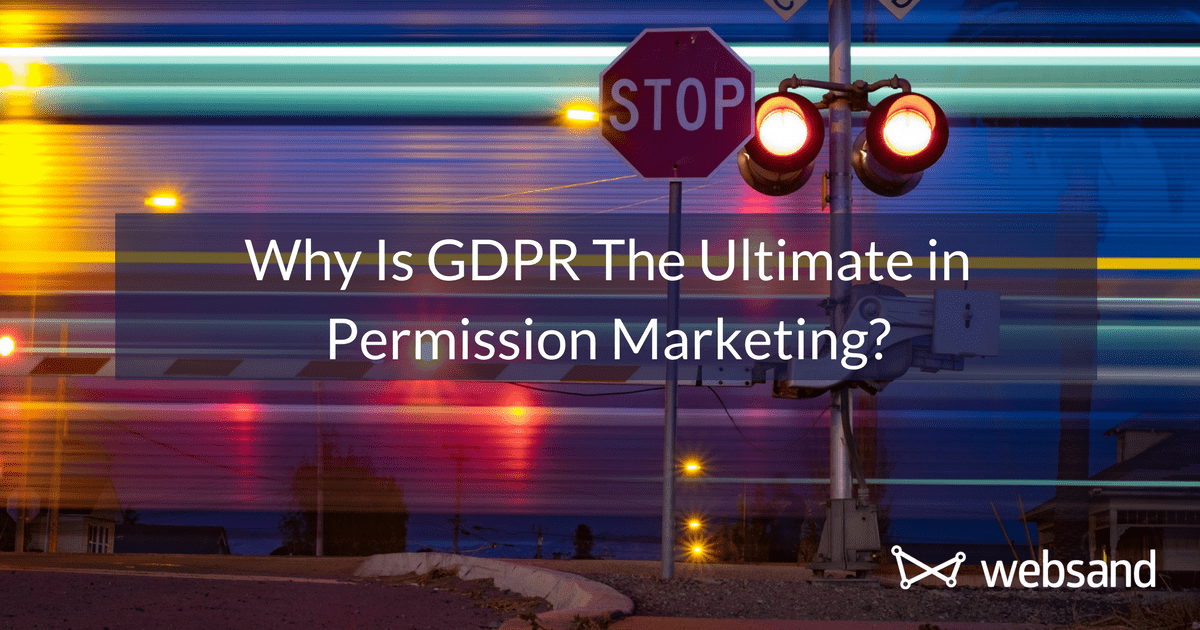Post updated 2 May 2020
Why GDPR enforces permission marketing?
When was the last time you read the terms and conditions when you signed up for something? And I mean read them, not skim them.
We sign up with businesses every day and hand away our data because we don’t read the T&Cs.
Until 24 May 2018, those businesses owned your data. We give it to them, but we can’t claim it back. Unsubscribing from an email list means you don’t get more emails. It doesn’t mean they purge your data.
That changed on 25 May 2018 when GDPR enforcement kicked in. From that point everything changed. Businesses in the EU or dealing with the EU no longer own your data. They’ll be a custodian of the data instead. That takes us back to the old concept of permission marketing.
Which is of course how marketing should be done.
Anyone should be able to walk away from the relationship.
It’s like a breakup. You should be able to walk out and take your stuff with you.
Let’s look at why GDPR is the ultimate in permission marketing.
Why Are Businesses so Scared of GDPR?
Most people online have short attention spans. So you want customers to take as few steps as possible to sign up with you.
Some businesses fear adding an extra checkbox or an extra step of seeking permission. They worry potential subscribers might drop out before they hand over their consent.
If that’s you, stop. Remember why you wanted the subscriber in the first place. You can solve their problem. Whether it’s a wonder product or a fabulous place to stay, you’re offering something people need.
If a potential customer doesn’t follow through and sign up?
They weren’t ready to buy in the first place. And that’s their right to change their mind. It’s the whole point of consent.
And for the businesses who need to seek consent from the subscribers they already have? The customers who want to stay with you will give that consent. We’ve talked about the Pareto Principle before. You know the one–80% of your sales come from 20% of your customers.
That 20% will grant their consent for you to look after their data.
Sure, you might lose subscribers following GDPR enforcement. But ask yourself why you’re chasing numbers rather than loyal customers.
Put Yourself in Your Customers’ Shoes
Think about it this way. You like hundreds of pages on Facebook. You’ve got your date of birth listed (got to love those ‘happy birthday’ messages). And you check in everywhere you go so your friends can see what you’re up to.
Do you want that data falling into the hands of an analyst or a marketer? They’ll turn that data, a small slice of what makes you ‘you’, into a customer profile. Which becomes a means of targeting adverts.
After GDPR, you can sever your relationship with a business. And you can ask them to forget you. They hand control of your data back to you. All that’s asked of you is your consent against how your data will be used by the data (and in an easy to understand way).
If that’s what you’d expect as a user, surely that’s what you’d offer as a business?
If you have concerns on collecting consent for your email marketing, read this.
What is Permission Marketing?
Permission marketing lies at the root of the new paradigm following GDPR. Seth Godin coined the term in 1999. It’s an alternative marketing method leading to better relationships with customers and subscribers.
It differs from traditional marketing which relies on interrupting something to get attention. Think of pop-ups, TV ad breaks, or direct mail. Experts think people see almost 4000 adverts every day. If you watch daytime television, you’ll see the same four adverts that many times.
Permission marketing works with customers. That way, customers seek product information and come to expect it from a business. They get information that’s relevant to them. And it relates to something they’re interested in.
Because users choose to receive marketing messages, they’re more engaged with your business. Interruption marketing works on customer impulses for short-term gain. A customer sees an advert for a product. They buy it with no real connection to the brand.
Permission marketing builds a relationship with the customer for long-term gains. It doesn’t always offer the same initial sales spikes. But it creates brand loyalty and focuses on that infamous 20% of customers.
This type of marketing offers higher conversion rates. Subscribers have already shown an interest by signing up. You’ve removed the first barrier to buying. Your email marketing helps convert subscribers into buyers.
GDPR Is the Ultimate in Permission Marketing
Using double opt-in for email marketing already filters out so-called ‘freebie hunters’. You know them – those users that sign up for lead magnets but then never buy. Having to confirm a subscription makes the freebie less attractive.
But is it still clear what a customer is signing up for when they follow your double opt-in?
To comply with GDPR, it must be transparent what they’ll receive. They need to have something to consent to, otherwise, they can’t give their consent.
Getting clear on what you offer helps them to give their permission. It also makes email marketing easier for you because you know what to send.
Once subscribers give permission, they know what to expect in their inbox. Because they’re expecting it, they’re more receptive to what you send. So make sure the emails after the first one work to build a relationship.
And if their needs change and they withdraw consent?
Let them leave with their dignity intact. And delete their data (you should only keep it for the minimum amount of time possible). They have the right to be forgotten.
Permission Marketing and Automation Go Hand-In-Hand
The strength of permission marketing is priming the customer to expect your messages. That’s why they’ve signed up. To get the full benefit, pair it with automation. The subscriber gets the right message at the right time.
Work out what your subscriber needs, and when they need it (based on the appropriate permissions of course). Set up suitable triggers and write the emails the customers want to receive.
Try segmenting your customers based on what they buy, how often they buy, or even where they’re based.

Doing the work upfront helps to save you time. So you can focus your energy on providing amazing service.
Ready to get your permission marketing up to speed? Switch to Websand. We’ll help you set up a data-driven, subscriber-focused platform. And you’ll be GDPR-compliant from day one.
Go on. Treat yourself. You, your business, and your subscribers deserve it.
Get in touch. We’re standing by!
Since we are talking consent, main image provided by unsplash-logoJad Limcaco
It’s time to start getting more from your email marketing
Sign up for a free Websand demo and let’s show you how to get the best from your email marketing.
